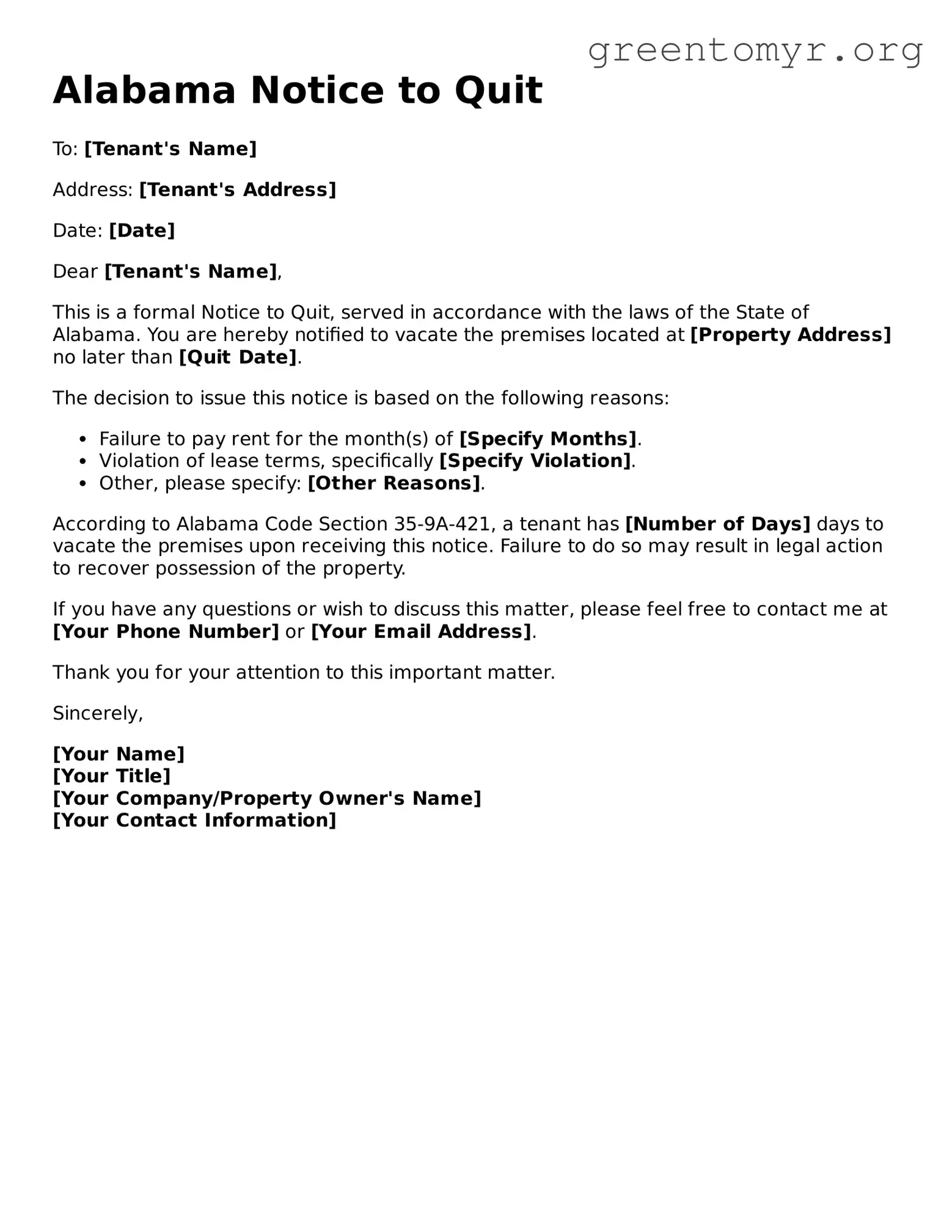Alabama Notice to Quit
To: [Tenant's Name]
Address: [Tenant's Address]
Date: [Date]
Dear [Tenant's Name],
This is a formal Notice to Quit, served in accordance with the laws of the State of Alabama. You are hereby notified to vacate the premises located at [Property Address] no later than [Quit Date].
The decision to issue this notice is based on the following reasons:
- Failure to pay rent for the month(s) of [Specify Months].
- Violation of lease terms, specifically [Specify Violation].
- Other, please specify: [Other Reasons].
According to Alabama Code Section 35-9A-421, a tenant has [Number of Days] days to vacate the premises upon receiving this notice. Failure to do so may result in legal action to recover possession of the property.
If you have any questions or wish to discuss this matter, please feel free to contact me at [Your Phone Number] or [Your Email Address].
Thank you for your attention to this important matter.
Sincerely,
[Your Name]
[Your Title]
[Your Company/Property Owner's Name]
[Your Contact Information]
